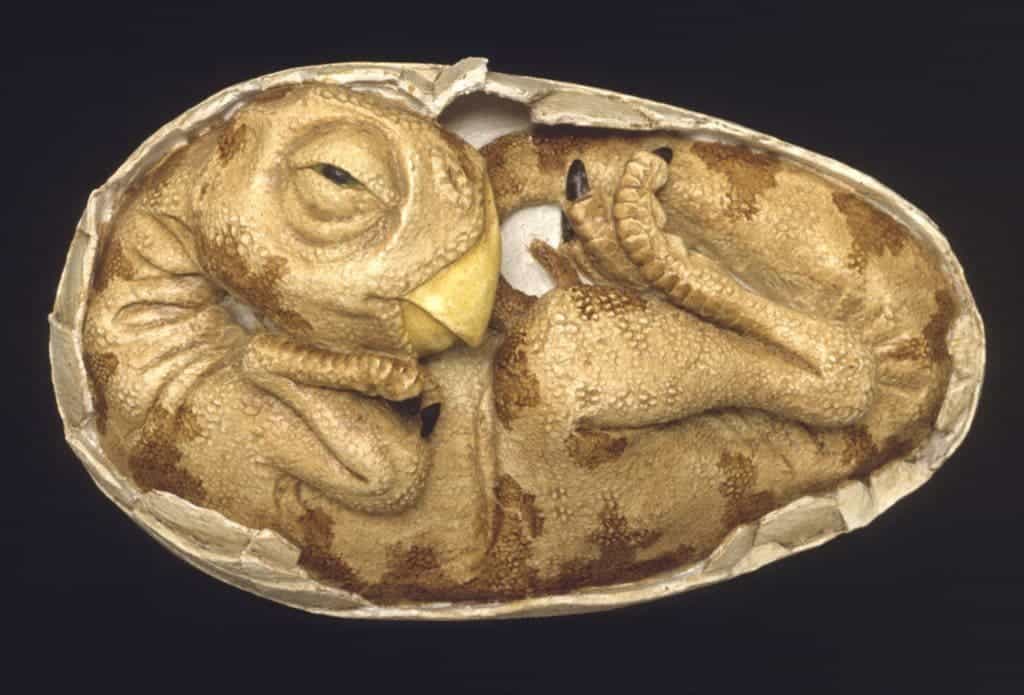One of the most important open questions in paleobiology today is whether dinosaurs were cold-blooded or warm-blooded. Their appearance suggests dinosaurs had a low metabolic rate, lazying around, charging at the sun much like modern reptiles like crocodiles. At the same time, their direct descendants are warm-blooded birds. Unfortunately, you can’t stick a thermometer up a dinosaur’s butt seeing how the last one was alive 65 million years ago. There are proxies, however, which can hint at dinosaurs’ body temperature. For instance, researchers looked at telltale isotopes to gauge the temperature of dinosaur eggs. What they found was that dinosaurs weren’t particularly warm-blooded, but not cold-blooded either. Instead, they were somewhere in between.

Eggshells are made out of calcium carbonate, but they also contain isotopes carbon 13 and oxygen 18 – elements with a heavier nucleus than in the stable configuration. The team led by Robert Eagle, a researcher at the University of California-Los Angeles (UCLA), carefully analyzed the eggs coming from 13 bird species (warm-blooded) and 9 reptiles (cold-blooded) and found the isotopes clump together in the shell of cold-blooded animals and spread out in the warm-blooded. They then applied the same method to fossilized dinosaur eggs.
“This technique tells you about the internal body temperature of the female dinosaur when she was ovulating,” explains study co-author Aradhna Tripati, a UCLA assistant professor of geology, geobiology and geochemistry. “This presents the first direct measurements of theropod body temperatures.”
Apparently, long-necked sauropod dinosaurs formed at temperatures of roughly 100 degrees Fahrenheit, while smaller theropods formed at just 90 degrees. But that still doesn’t tell us if the dinosaurs in question got their body heat through internal mechanisms or from the sun. The researchers had to determine the temperature of the environment when the dinosaurs were still alive, for comparison. In this case, the Gobi desert registered about 79 degrees Fahrenheit in temperature. This suggests that dinosaurs weren’t fully endothermic like modern mammals, but neither were ectotherms. Instead, they could be classed as mesotherms– at least this is the case for oviraptorid therapods.
The findings follow in the footsteps of a similar study, published in 2011 by Caltech scientists, which analyzed isotopes in dinosaur teeth. Another study suggests dinosaurs were warm-blooded based on their growth rates. Like mammals, dinosaurs grew in size at different rates during seasonal changes.









